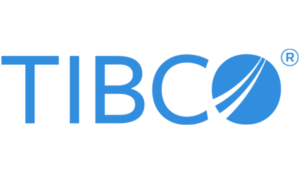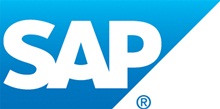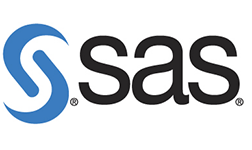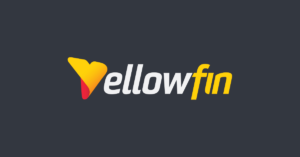
ML and BI Are Coming Together, Gartner Says

(Remus Rigo/Shutterstock)
The convergence of machine learning and business intelligence is upon us, as BI tool makers increasingly are exposing ML capabilities to users, and users are performing ML activities in their BI tools. That’s according to the latest Gartner report on analytics and BI tools, which was released this week.
In its February 11 Magic Quadrant for Analytics and Business Intelligence (ABI) Platforms, the storied Stamford, Connecticut analyst firm did its best to quantify and qualify the trends in the sector. While BI and ML have largely existed on parallel tracks, with BI seeking to report what happened and ML seeking to predict what will happen, Gartner sees the two disciplines converging, at least as far as the toolsets are concerned.
Not all ML work will occur within BI tools, of course. But according to Garter, 40% of ML model development and scoring “will be done in products that do not have [ML] as their primary goal” by 2022, the analyst group says. That’s a considerable number, and if it comes true, it will have ramifications on how the larger market of data and analytics tools develops.
The market for ABI tools (Gartner’s term) finds itself at a cross-roads, with significant turmoil as a result of several events, including consolidation of the market, the rise of cloud platforms, and the continued emergence of ML.
To differentiate themselves in a crowded market where visualization is now a commodity, ABI vendors are adopting additional capabilities, including the aforementioned ML model development and scoring functions. But the ML focus doesn’t stop there, and Gartner sees the vendors using ML and artificial intelligence (AI) capabilities to enhance the entire user experience, including improving the way that users prepare data, find insights, and explain their findings to others.
Gartner says that 2019 “was a year of transition toward cloud ecosystem dominance.” Google’s acquisition of Looker and Salesforce’s acquisition of Tableau make sense when you consider that Microsoft has dominated the ABI field with its PowerBI offering, which it offered at a relatively low cost compared to other ABI offerings.
The overall ABI market has continued to grow despite the pricing pressure exerted by Microsoft and other vendors, thanks to continued strong demand for analytics capabilities. According to Gartner, the ABI field posted a 22.3% increase in revenues in 2018, down from 35.0% the prior year (it didn’t supply a 2019 figure).
Here’s how the ABI field shook out in 2019, courtesy of the analysts at Gartner:
Leaders Quadrant
The leaders quadrant has not changed in 2020, and Microsoft, courtesy of the ![]() power of PowerBI, continues to hold its spot farthest to the right and closest to the top. Gartner lauds Microsoft for a “comprehensive and visionary” product roadmap and a robust marketing reach. In terms of the product itself, PowerBI is no longer trailing competitors (as it has before), but leads most ABI offerings, thanks in large part for its automated ML and augmented analytics capabilities. Support for data prep, discovery, and interactive dashboards all check necessary boxes for a leader. However, the on-prem and cloud versions do not have feature parity, and data connections, particularly to SAP, are problematic.
power of PowerBI, continues to hold its spot farthest to the right and closest to the top. Gartner lauds Microsoft for a “comprehensive and visionary” product roadmap and a robust marketing reach. In terms of the product itself, PowerBI is no longer trailing competitors (as it has before), but leads most ABI offerings, thanks in large part for its automated ML and augmented analytics capabilities. Support for data prep, discovery, and interactive dashboards all check necessary boxes for a leader. However, the on-prem and cloud versions do not have feature parity, and data connections, particularly to SAP, are problematic.
Tableau is Microsoft’s closest competitor in the Magic Quadrant, and it has a good record to run on, particularly when it comes to interactive data exploration and visualization. But Tableau, which is now owned by Salesforce, bolstered its case in 2019 by augmenting its BI with AI, such as through a natural language interface for asking questions. Data prep and support for server environments were also improved. While Tableau made inroads in augmented analytics and data governance, these are caution areas in Gartner’s book.
Qlik maintains its spot in the leader’s quadrant thanks to its strong product vision. Gartner likes the ease of use of Qlik’s ABI offering, particularly for entry-level users, and appreciates how it’s added augmented capabilities to deliver “context-aware insights.” Its microservices-based architecture gives Qlik the capability to run across multiple cloud (a neat trick for ABI tools that aren’t owned by one of the clouds) and provides different experiences for users of different skill levels. Qlik’s efforts data literacy (which we’ve covered in these pages on several times) is another differentiator. Some cautions include perceived lack of market momentum despite 2019 investments, potential difficulty in migrating to its current flagship offering, Qlik Sense, and questions about self-service usage.
ThoughtSpot retains its spot in the leader’s quadrant on the back of its unique use of a search-based user interface and reliance on natural language processing (NLP) for interaction with data. Gartner says ThoughtSpot can support “analytically complex questioning of large amounts of data,” which it pegs at around 1TB, while a Facebook-like feed of data lets users easily access other streams. This consumer-like experience resonates with ThoughtSpot’s market, and the addition of ML for automated anomaly detection and proactive alerting help its cause. However, ThoughtSpot is not a leader when it comes to data prep, visual exploration, and dashboards, according to Gartner. It also has a limited global reach compared to other ABI vendors, and setup is an IT-intensive process.
Challengers Quadrant
In the Challengers quadrant, TIBCO Software takes the lead on the back of its  respected Spotfire product, which Gartner says delivers strong dashboarding, interactive visualization, ML-based data prep, and workflow. The company (which was listed in the Visionaries quadrant last year) also has a strong ML story with integration from the Statistica package and an R runtime. But momentum and marketing perception are issues for TIBCO not to mention cost, according to Gartner.
respected Spotfire product, which Gartner says delivers strong dashboarding, interactive visualization, ML-based data prep, and workflow. The company (which was listed in the Visionaries quadrant last year) also has a strong ML story with integration from the Statistica package and an R runtime. But momentum and marketing perception are issues for TIBCO not to mention cost, according to Gartner.
MicroStrategy, which was the lone Challenger in last year’s quadrant, reprises ![]() role for 2020 alongside the aforementioned vendor. Gartner says Microstrategy is “extremely strong functionally,” thanks to its consumer-friendly design and position as an enterprise standard. The vendor, which just completed its annual user conference, is unique in its long-term consistency (the company does not acquire others, Gartner says), which “leads to more stable, less buggy code, especially compared to competitors,” the analyst group says. Concerns include cost of software, a lack of momentum, and the lack of a larger “stack,” which tip the scales in favor of cloud vendors.
role for 2020 alongside the aforementioned vendor. Gartner says Microstrategy is “extremely strong functionally,” thanks to its consumer-friendly design and position as an enterprise standard. The vendor, which just completed its annual user conference, is unique in its long-term consistency (the company does not acquire others, Gartner says), which “leads to more stable, less buggy code, especially compared to competitors,” the analyst group says. Concerns include cost of software, a lack of momentum, and the lack of a larger “stack,” which tip the scales in favor of cloud vendors.
Looker moved on up from the Niche players quadrant into the Challenger’s  quadrant this year, in large part thanks to the $2.6-billion acquisition by Google, which closed today. Gartner likes how Looker leaves the data where it is (usually a database, often in the cloud) and queries it from afar, not to mention the abstraction and reuse afforded through its LookML layer. Embeddability and customer-friendly development tools also won it points, as well as generally positive customer reviews. Potential downsides of Looker are the training required to use LookML, a narrow product vision (most notably, a lack of augmented analytics and NLP capabilities), and its limited global presence.
quadrant this year, in large part thanks to the $2.6-billion acquisition by Google, which closed today. Gartner likes how Looker leaves the data where it is (usually a database, often in the cloud) and queries it from afar, not to mention the abstraction and reuse afforded through its LookML layer. Embeddability and customer-friendly development tools also won it points, as well as generally positive customer reviews. Potential downsides of Looker are the training required to use LookML, a narrow product vision (most notably, a lack of augmented analytics and NLP capabilities), and its limited global presence.
Visionaries Quadrant
Despite its acquisition of Tableau, Salesforce retained a listing in the  quadrant, and returned to the Visionaries quadrant this year. Gartner lauded Salesforce for “a very robust product line,” and in particularly highlighted the augmented analytic capabilities and partner ecosystem of the Einstein Analytics line. Embedded analytics and support for large deployments were also plusses. However, the augmented analytic offerings of other vendors threaten Salesforce’s lead in that area, and cost is also a concern.
quadrant, and returned to the Visionaries quadrant this year. Gartner lauded Salesforce for “a very robust product line,” and in particularly highlighted the augmented analytic capabilities and partner ecosystem of the Einstein Analytics line. Embedded analytics and support for large deployments were also plusses. However, the augmented analytic offerings of other vendors threaten Salesforce’s lead in that area, and cost is also a concern.
SAP moved up and to the right within the Visionaries quadrant this year  thanks to strong product functionality, particularly in augmented and advanced analytics. It also offers a wide breadth of capability through pre-built content in the SAP Analytics Cloud. However, SAP analytic offerings are mostly only considered by existing SAP customers, which limits its market reach. A lack of scale among customer deployments is another concern, as well as its “cloud-only” focus, Gartner says.
thanks to strong product functionality, particularly in augmented and advanced analytics. It also offers a wide breadth of capability through pre-built content in the SAP Analytics Cloud. However, SAP analytic offerings are mostly only considered by existing SAP customers, which limits its market reach. A lack of scale among customer deployments is another concern, as well as its “cloud-only” focus, Gartner says.
Despite improving its ABI lineup, SAS remained largely in the same place this  year, thanks to its challenges in marketing and pricing. Gartner had a lot of good stuff to say about improvements in SAS’s augmented analytics offerings, including automated suggestions, AI-driven data prep, what if analysis, and natural-language generation. The breadth of SAS’s Visual Analytics offering (the one Gartner analyzed) within SAS’s over product lineup is a strength, not to mention its global reach. But market perception around SAS is a negative, and Gartner says SAS rates poorly in pricing perception among customers.
year, thanks to its challenges in marketing and pricing. Gartner had a lot of good stuff to say about improvements in SAS’s augmented analytics offerings, including automated suggestions, AI-driven data prep, what if analysis, and natural-language generation. The breadth of SAS’s Visual Analytics offering (the one Gartner analyzed) within SAS’s over product lineup is a strength, not to mention its global reach. But market perception around SAS is a negative, and Gartner says SAS rates poorly in pricing perception among customers.
Oracle is back in the Visionaries quadrant once again, having moved up and ![]() to the right from the Niche Players basement. Gartner considers Oracle Analytics Cloud a leader when it comes to augmented analytics capabilities, thanks to robust natural language generation and natural language query capabilities. It also likes Oracle’s vision and its “full stack” vision that meshes Oracle ERP products into the OAC. But Big Red has some drawbacks, mostly around the Oracle-centricity of OAC, a lack of market awareness, and a perception that Oracle is in “rebuilding mode.”
to the right from the Niche Players basement. Gartner considers Oracle Analytics Cloud a leader when it comes to augmented analytics capabilities, thanks to robust natural language generation and natural language query capabilities. It also likes Oracle’s vision and its “full stack” vision that meshes Oracle ERP products into the OAC. But Big Red has some drawbacks, mostly around the Oracle-centricity of OAC, a lack of market awareness, and a perception that Oracle is in “rebuilding mode.”
Sisense retained its residence in the Visionaries quadrant, although it slipped  a bit along the “completeness of vision” axis. Gartner lauds Sisense’s support for “native cloud BI” and support for Docker and Kubernetes. Plusses include its data preparation, visual exploration, and basic analytics functionalities, and its ElastiCube in-chip processing continues to be a differentiator. Knocks against the firm include relatively shallow use of the producdt (customers don’t use it for complex analytics, Gartner says), its narrow marketing focus, and relatively small deployment size.
a bit along the “completeness of vision” axis. Gartner lauds Sisense’s support for “native cloud BI” and support for Docker and Kubernetes. Plusses include its data preparation, visual exploration, and basic analytics functionalities, and its ElastiCube in-chip processing continues to be a differentiator. Knocks against the firm include relatively shallow use of the producdt (customers don’t use it for complex analytics, Gartner says), its narrow marketing focus, and relatively small deployment size.
We wrap up with Yellowfin, which moved up from the Niche Players quadrant  into the Visionaries, largely on the back of “its product innovation,” which Gartner says “is among the strongest in the market.” The vendor provides data prep, augmented analytics, support for automated, ML-powered alerting, and it offers natural language generation through its Stories mode. However data connectivity is a concern for Yellowfin, according to Gartner, which also cited a lack of market momentum and a limited geographic presence as cautions.
into the Visionaries, largely on the back of “its product innovation,” which Gartner says “is among the strongest in the market.” The vendor provides data prep, augmented analytics, support for automated, ML-powered alerting, and it offers natural language generation through its Stories mode. However data connectivity is a concern for Yellowfin, according to Gartner, which also cited a lack of market momentum and a limited geographic presence as cautions.
Nine vendors crowded into the Niche Players category, including IBM, Information Builders, Domo, Pyramid Analytics, BOARD International, Logi Analytics, Alibaba Cloud, and Dundas. The last two vendors were added to this Magic Quadrant, while GoodData was dropped as a result of a failure to meet tier-one marketing traction criteria, Gartner says.
Related Items:
Gartner: Augmented Analytics Ready for Prime Time
The ‘Big Bang’ of Data Science and ML Tools
Microsoft Surges in Gartner Quadrant with Power BI
[wpsr_share_icons icons="twitter,facebook,linkedin,reddit,email" icon_size="40px" icon_bg_color="" icon_shape="circle" hover_effect="opacity" sm_screen_width="768" lg_screen_action="show" sm_screen_action="show" page_url="https://www.bigdatawire.com/2020/02/13/ml-and-bi-are-coming-together-gartner-says/" page_title="ML and BI Are Coming Together, Gartner Says" page_excerpt="
The convergence of machine learning and business intelligence is upon us, as BI tool makers increasingly are exposing ML capabilities to users, and users are performing ML activities in their BI tools. Read more…
" share_counter=""]



























